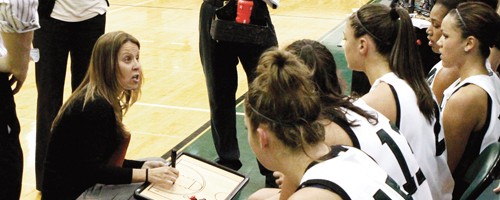Money prime factor in gubernatorial primaries
SALEM, Ore. (AP) ?” With the Oregon governor’s race coming down to the wire, every penny counts, from the $623,910 that incumbent Gov. Ted Kulongoski has on hand to the $34,723 that Republican hopeful Jason Atkinson has collected over the last five weeks.
Candidates who can afford it will make their final pitches to a broad swath of voters via TV ads, while others will rely on cheaper, more targeted direct mail and radio spots.
According to campaign finance reports filed with the Secretary of State’s office on Thursday, Kulongoski was comfortably leading the fundraising race among the Democrats, with $229,612 raised since the end of March, including a $50,000 donation from Nike chairman Phil Knight.
The totals were strong even though a number of traditional Democratic donors, like the state’s largest teachers’ union, have been sitting out the primary, and polls have shown Kulongoski with low approval ratings even among committed Democrats.
“We are not taking anything for granted, but we are confident about the primary,” said Cameron Johnson, Kulongoski’s campaign spokesman. “We are conserving our resources and focusing on the general [election].”
His two Democratic challengers have raised far less money. Former State Treasurer Jim Hill reported raising $154,000 in the last month, including $90,000 from the political arm of the Service Employees International Union. The SEIU is also handling phone-banks and coordinating door-to-door canvassing for the candidate.
But the Hill campaign also owes $140,000 to an Alexandria, Va.-based media firm. It has pinned most of its budget on a TV commercial that starts running this week in Portland and Eugene, said his campaign manager, Jef Green.
Former Lane County Commissioner Pete Sorenson reports having just $11,892 on hand, after raising only about $14,000 in April.
Lower-budget get-out-the-vote tactics are also being used by the Atkinson campaign, which has been dwarfed in its fundraising by Portland attorney Ron Saxton and former GOP chairman Kevin Mannix, who reported spending $114,008 in the last month. The campaign is making targeted calls to subgroups like home-schooling families, farmers and hunting enthusiasts, said campaign manager Matt Evans.
It’s the Saxton campaign that continues to draw the real money in the GOP primary. The campaign reported raising $202,385 in April, and said that it spent just over $796,000 during the month, mainly on direct mail and advertising costs. That’s three times as much as the Mannix campaign, Saxton’s closest competitor in the polls, and that spending should only intensify as the campaign moves into its final weeks, as the campaign still has $425,225 on hand.
“We are going to be on television with a positive message, we are going to be on the radio reaching out to voters, and in the mailboxes, as we have been for the last two or three weeks,” said Felix Schein, Saxton’s campaign manager.
Saxton’s largest donation in April was $25,000, which came from Jed Meese, co-founder of an Ashland-based vitamin manufacturer.
The Mannix campaign raised $74,346 in April, about a third of Saxton’s total, and reported having only a little over $30,000 on hand. His report did not include any new donations from Loren Parks, the Nevada-based medical equipment manufacturer that has so far given the Mannix campaign $381,000.
“If you go back to 2002, we were outspent on television alone 10 to 1, so this is nothing new to us,” said Jack Kane, a Mannix campaign consultant. “We don’t have the money that he has, and we are used to that.”
The wild card is Sen. Ben Westlund, a former Republican from Bend who hopes to collect enough signatures to get on the ballot as an Independent. Though Westlund’s presence on the ballot is not yet certain, he reported raising $75,020 in April, and spending about $60,000 in the same period.




